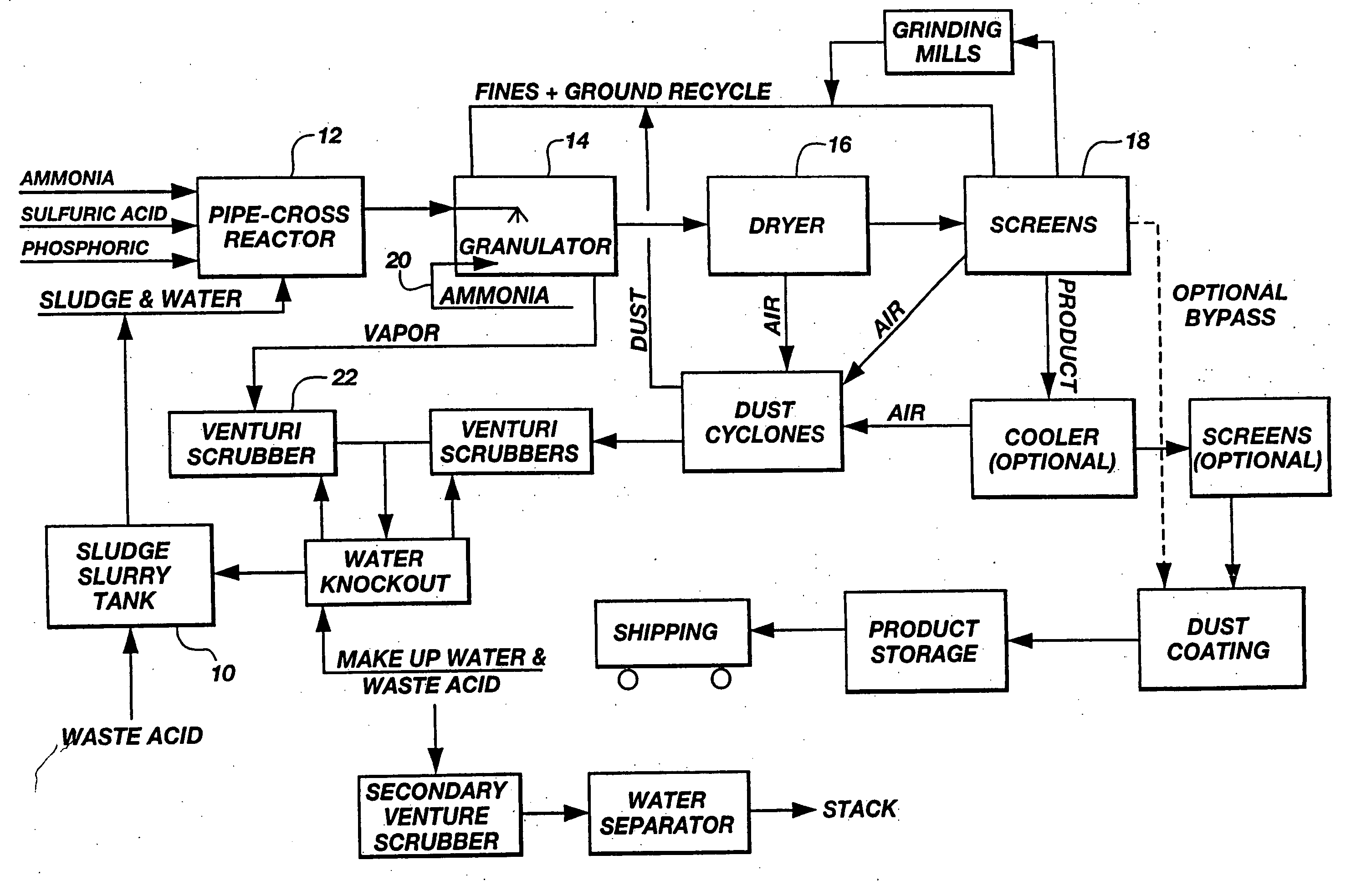Sewage sludge recycling with a pipe cross-reactor
a cross-reactor and sewage sludge technology, applied in the field of organic material treatment, can solve the problems of relatively low analysis of fertilizer with regard to its “plant nutrient value, insufficient size and shape to be spread, etc., and achieve the effect of enhancing the plant nutrient value of relatively low analysis
- Summary
- Abstract
- Description
- Claims
- Application Information
AI Technical Summary
Benefits of technology
Problems solved by technology
Method used
Image
Examples
example
[0039] In an agitation tank, 6700 kilograms / hour (7.4 tons / hour) of sewage sludge are mixed with 37 liters per minute (ten gallons / minute (gpm)) of scrubber water from a venturi scrubber to form a slurry. The slurry is of a consistency that it can be pumped with a positive displacement pump or other suitable pump to a pipe-cross reactor equipped to receive ammonia, sulfuric acid, phosphoric acid, sewage sludge, and water. The pipe-cross reactor has a diameter of approximately four (4) inches, and is forty (40) feet long. The pipe-cross reactor terminates in a rotating drum granulator. The rotating drum granulator is six (6) feet in diameter, and is twenty (20) feet long.
[0040] The slurry is added to the pipe-cross reactor, and is reacted with 8.6 gpm 99.5% ammonia, 8.6 gpm sulfuric acid (93%), and 2.6 gpm phosphoric acid (54% P2O5). The temperature of the pipe-cross reactor (due to the exothermic reaction between the acid and the base) is maintained at about 149° C. (300° F.) with ...
PUM
 Login to View More
Login to View More Abstract
Description
Claims
Application Information
 Login to View More
Login to View More - R&D
- Intellectual Property
- Life Sciences
- Materials
- Tech Scout
- Unparalleled Data Quality
- Higher Quality Content
- 60% Fewer Hallucinations
Browse by: Latest US Patents, China's latest patents, Technical Efficacy Thesaurus, Application Domain, Technology Topic, Popular Technical Reports.
© 2025 PatSnap. All rights reserved.Legal|Privacy policy|Modern Slavery Act Transparency Statement|Sitemap|About US| Contact US: help@patsnap.com



